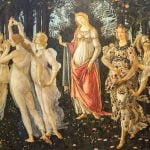The Renaissance period marked a pivotal time in history when intellectual, artistic, and cultural movements flourished across Europe. But what development helped Renaissance ideas travel north from Italy? The answer lies in a combination of factors that facilitated the spread of these revolutionary ideals beyond the Italian borders.
One crucial development that propelled the dissemination of Renaissance ideas was the invention of the printing press. This technological revolution transformed communication and played a significant role in dispersing knowledge and fostering intellectual exchange. Furthermore, trade routes and commercial networks also played a vital role in spreading Renaissance ideas through commerce, connecting different regions and facilitating the exchange of goods and knowledge.
Additionally, the rise of humanism during the Renaissance period nurtured intellectual growth and empowered individuals to explore new perspectives on art, literature, science, and philosophy. As wealthy families became patrons of the arts and supported cultural exchange, they contributed to the popularization of Renaissance ideals. These various developments collectively contributed to the far-reaching effects of Renaissance ideals on the world.
The Birth of the Printing Press
The development of the printing press in the 15th century played a pivotal role in the spread of Renaissance ideas from Italy to Northern Europe. Invented by Johannes Gutenberg around 1440, the printing press revolutionized communication by making it possible to produce books and pamphlets on a mass scale. This advancement in technology allowed for the widespread dissemination of humanist writings, scientific discoveries, and artistic works that were central to the Renaissance movement.
Before the invention of the printing press, books were painstakingly copied by hand, making them extremely rare and expensive. However, with the introduction of moveable type, printing became much more efficient and cost-effective. As a result, intellectual and cultural exchange flourished as printed materials could be produced in large quantities and distributed widely. This facilitated the transfer of knowledge and ideas across regions and contributed significantly to the expansion of Renaissance ideals beyond Italy.
One noteworthy example of how the printing press facilitated the northward spread of Renaissance ideas is through the production and distribution of religious texts. The translation of the Bible into vernacular languages such as German by Martin Luther was made possible by the printing press, allowing for widespread access to religious literature. This not only influenced religious reform but also contributed to a broader dissemination of humanist principles throughout Northern Europe.
| Development | Impact |
|---|---|
| The Printing Press | Revolutionized communication through mass production of books and pamphlets |
| Translation of Bible | Widespread access to religious texts encouraged intellectual exchange |
Trade Routes and Commercial Networks
The development that helped Renaissance ideas travel north from Italy was the expansion of trade routes and commercial networks. This period saw a significant increase in economic activity, with traders and merchants traveling throughout Europe and beyond, spreading not only goods but also ideas. The exchange of commodities facilitated the movement of knowledge, art, and philosophical concepts, allowing for the diffusion of Renaissance ideals to different regions.
One way this occurred was through the establishment of trading posts and ports in various locations. Merchants would bring goods from Italy to these centers and then distribute them to other parts of Europe. Along with these goods came cultural influences and intellectual discussions that contributed to the dissemination of Renaissance principles.
In addition to physical trade routes, the development of commercial networks played a vital role in spreading Renaissance ideas. Merchants formed connections with individuals from diverse backgrounds, fostering cultural exchange and intellectual dialogue. These connections helped create an environment where new ideas could flourish and gain traction in regions outside of Italy.
- Trade routes expanded
- Establishment of trading posts
- Growth of commercial networks
The Role of Humanism
The Renaissance movement in Italy was greatly influenced by the humanist philosophy, which emphasized the importance of human potential and achievement. Humanism played a pivotal role in fostering intellectual exchange during this period, allowing Renaissance ideas to travel north from Italy. This section will explore how humanism contributed to the spread of Renaissance ideals and facilitated cultural and intellectual exchange across Europe.
One way humanism fostered intellectual exchange was through its emphasis on classical education and the study of ancient texts. Humanists sought to revive and rediscover the works of ancient Greek and Roman scholars, promoting a renewed interest in literature, history, philosophy, and other disciplines. This led to the establishment of schools and educational institutions dedicated to the study of classical texts, providing a platform for the exchange of ideas among scholars and students.
Another significant aspect of humanism was its focus on individual creativity, critical thinking, and expression. Humanist scholars championed the idea that individuals had the capacity to contribute meaningfully to society through their intellect and talents. This mindset encouraged dialogue, debate, and collaboration among thinkers from different regions, creating a network for the exchange of innovative ideas and perspectives.
The ideals of humanism also challenged traditional religious and societal norms, prompting discussions about ethics, morality, and governance. As these discussions unfolded across Europe, they sparked intellectual curiosity and debate, leading to an increased circulation of Renaissance ideas beyond Italy. In essence, humanism served as a catalyst for fostering intellectual exchange by inspiring individuals to question established beliefs and seek new knowledge.
Patronage and Cultural Exchange
During the Renaissance period, wealthy families played a crucial role in supporting and promoting the spread of Renaissance ideas. Through their patronage and cultural exchange, these affluent individuals helped to facilitate the dissemination of art, literature, and intellectual pursuits throughout Europe. This section will explore how patronage and cultural exchange contributed to the spread of Renaissance ideas beyond Italy.
The Medici Family: Champions of Renaissance Art and Learning
One of the most prominent examples of patronage during the Renaissance is the Medici family of Florence. As influential bankers and political leaders, the Medicis provided financial support to artists, writers, and scholars, allowing them to pursue their creative endeavors. This patronage not only fostered a flourishing artistic community in Florence but also helped to disseminate Renaissance ideals through commissioned works that celebrated humanism, individualism, and classical themes.
Cultural Exchange: The Transformation of Artistic Styles
The exchange of artistic ideas and techniques was another key aspect of how wealthy families supported the spread of Renaissance ideals. As affluent patrons commissioned works from artists across different regions, they facilitated the cross-pollination of artistic styles and methods. This cultural exchange led to the blending of regional artistic traditions with Renaissance concepts, contributing to the diffusion of new artistic movements throughout Europe.
Supporting Intellectual Pursuits: Creating Centers for Learning
In addition to sponsoring visual arts, wealthy families also supported educational institutions and centers for learning. By endowing universities, libraries, and academies, these patrons created environments where scholars could study classical texts, conduct research, and engage in intellectual discourse. These centers became hubs for exchanging ideas and knowledge, further contributing to the dissemination of Renaissance principles throughout Europe.
Overall, it was through their patronage of the arts, promotion of cultural exchange, and support for intellectual pursuits that wealthy families played a pivotal role in spreading Renaissance ideas beyond Italy. Their influence helped to cultivate an environment where creativity flourished and intellectual exploration thrived – ultimately contributing to the broader impact of Renaissance ideals on societies across Europe.
Universities and Educational Centers
The Renaissance was a period of great intellectual and cultural growth in Europe, and the exchange of ideas played a crucial role in its development. Universities and educational centers were particularly important in nurturing this growth, providing a platform for scholars and students to engage with Renaissance ideals. These institutions became hubs for the dissemination of knowledge, contributing to the spread of Renaissance ideas beyond Italy and into northern Europe.
One key development that helped Renaissance ideas travel north from Italy was the establishment of universities in cities such as Paris, Oxford, and Heidelberg. These universities became centers of learning where scholars could study classical texts, engage in philosophical debates, and contribute to the intellectual discourse of the time. The presence of these educational institutions created an environment conducive to the exchange of ideas, allowing Renaissance concepts to take root and flourish outside of Italy.
Furthermore, the curriculum at these universities began to incorporate humanist teachings, emphasizing the study of classical languages, literature, and philosophy. This focus on humanism helped bridge the gap between northern European scholars and their Italian counterparts, fostering a common intellectual framework that transcended geographical boundaries. As a result, Renaissance ideals were able to gain traction in northern Europe through academic networks and collaborations.
Ultimately, universities and educational centers played a vital role in nurturing intellectual growth during the Renaissance and facilitated the spread of its ideas beyond Italy. By providing a platform for scholarly exchange and incorporating humanist teachings into their curricula, these institutions contributed significantly to the dissemination of Renaissance ideals throughout Europe.
| Key Development | Impact |
|---|---|
| Establishment of universities outside Italy | Created centers for intellectual discourse beyond Italian borders |
| Incorporation of humanist teachings into university curriculum | Fostered common intellectual framework across Europe |
The Influence of Northern Humanists
The Renaissance movement, which originated in Italy, was not confined to the Italian peninsula. One of the key factors that helped propagate Renaissance ideas northward was the influence of northern humanists. These intellectuals played a crucial role in embracing and popularizing the ideals of the Renaissance, contributing to its spread throughout Europe.
Humanist Scholars Embracing Renaissance Ideas
Northern humanists, such as Desiderius Erasmus in the Netherlands and Thomas More in England, were instrumental in embracing the values of humanism and promoting classical learning. They ardently believed in the importance of education, literature, and critical thinking, which are central tenets of Renaissance thought. By championing these ideas through their writings and teachings, they helped to create a receptive intellectual environment for Renaissance ideals to take root in Northern Europe.
Popularizing Renaissance Ideals Through Literature
The works of northern humanist scholars played a significant role in popularizing Renaissance ideals among the general population. Through their writings in vernacular languages, they made classical texts more accessible to a wider audience. This dissemination of knowledge helped to foster an appreciation for art, literature, history, and philosophy, all key components of the Renaissance movement.
The Role of Printing Press
Furthermore, it was Northern humanist scholars who took advantage of the newly developed printing press technology to publish and distribute their works more widely. This invention revolutionized communication by allowing for mass production of books and other printed materials. The ability to produce affordable books meant that more people had access to knowledge and were able to engage with Renaissance ideas.
The Impact of Religious Reformation
The religious reformation of the sixteenth century played a significant role in transforming and disseminating Renaissance values throughout Europe. The reformation, led by figures such as Martin Luther and John Calvin, challenged the authority of the Catholic Church and paved the way for new interpretations of religious and moral principles. This movement not only resulted in a period of religious upheaval but also contributed to the spread of Renaissance ideas, particularly in Northern Europe.
One key development that helped Renaissance ideas travel north from Italy during this time was the printing press. The invention of this revolutionary technology by Johannes Gutenberg in the mid-15th century made it easier and more affordable to reproduce written materials, including philosophical treatises, scientific discoveries, and artistic works. As a result, Renaissance ideals could be disseminated more widely across Europe, reaching scholars, intellectuals, and ordinary citizens in Northern countries.
Moreover, the religious reformation created fertile ground for the reception of Renaissance values in Northern Europe. The questioning of traditional religious beliefs and practices opened up space for intellectual exploration and debate, creating an environment conducive to embracing humanistic ideas. The emphasis on individual interpretation of scripture and personal spiritual experience encouraged a broader mindset that welcomed new ways of thinking about art, literature, philosophy, and education.
Conclusion
In conclusion, the Renaissance was a monumental period in history that transformed Europe and eventually had a far-reaching impact on the world. The development that helped Renaissance ideas travel north from Italy was the invention of the printing press by Johannes Gutenberg. This technological advancement revolutionized communication and made it possible to disseminate knowledge and ideas to a much wider audience.
Furthermore, trade routes and commercial networks played a crucial role in spreading Renaissance ideals through commerce. As merchants traveled throughout Europe, they carried with them not only goods but also ideas, leading to the exchange of intellectual concepts across borders. Additionally, the fostering of intellectual exchange through humanism, as well as the support of wealthy families through patronage, allowed for the nurturing and spread of Renaissance ideals.
Moreover, universities and educational centers served as hubs for intellectual growth, further cultivating Renaissance thinking and nurturing individuals who would go on to influence their respective societies. Finally, the embrace and popularization of Renaissance ideals by northern humanists, as well as the impact of religious reformation in transforming and disseminating these values further contributed to the widespread influence of this intellectual movement.
In reflection, it is evident that various factors worked together to enable Renaissance ideas to transcend geographical boundaries and leave an indelible mark on human civilization.
Frequently Asked Questions
What Will Help the Renaissance Spread North From Italy?
The Renaissance spread north from Italy due to the influence of trade, as well as the movement of artists, scholars, and ideas across Europe. The printing press also played a significant role in disseminating Renaissance ideals.
What Invention Helped the Renaissance Spread to Northern Italy?
The invention of the printing press by Johannes Gutenberg in the mid-15th century helped to spread the Renaissance to Northern Italy and beyond. This new technology allowed for the mass production of books and other written materials, enabling the widespread dissemination of Renaissance ideas.
What Caused the Renaissance to Move North?
Several factors caused the Renaissance to move north, including the decline of feudalism, the growth of prosperous cities, and the patronage of wealthy merchants and ruling families who supported artistic and intellectual endeavors.
Additionally, the fall of Constantinople in 1453 led to an influx of Greek scholars fleeing to Western Europe with classical texts, further fueling the spread of Renaissance humanism.

I’m a passionate traveler, writer, and Italophile. My fascination with Italy’s history, art, and culture has led me on countless adventures across the Italian landscape. Through “I Live Italy,” I share my love for this extraordinary country and aims to inspire others to explore its boundless beauty.





